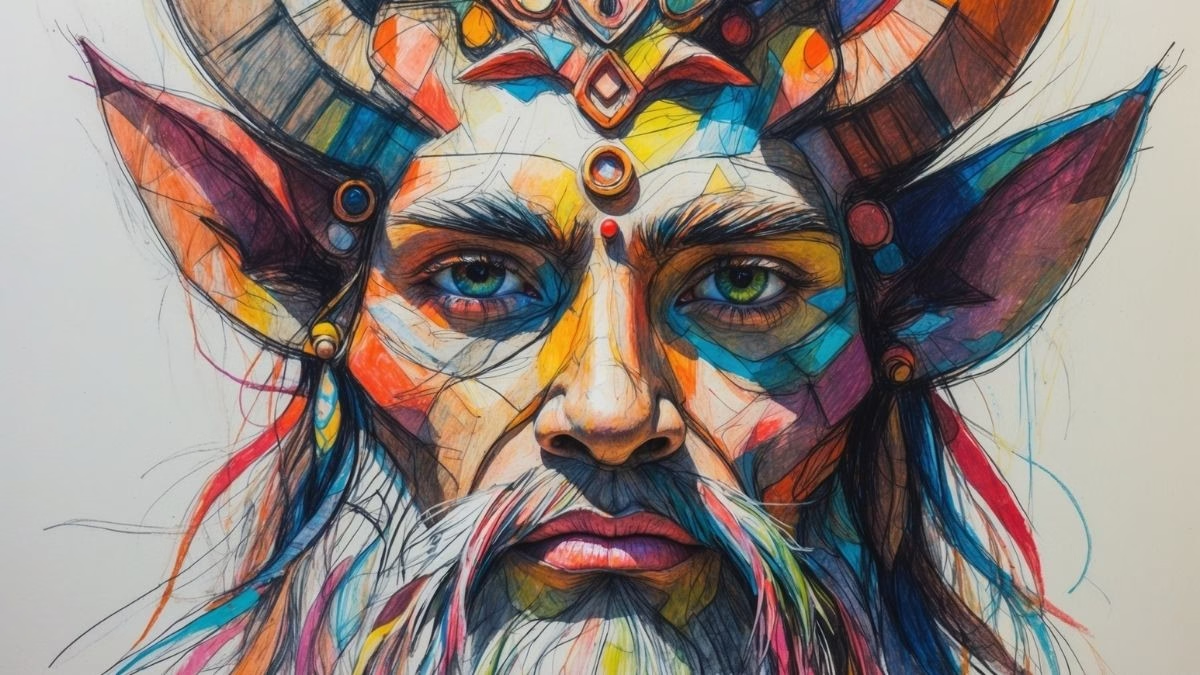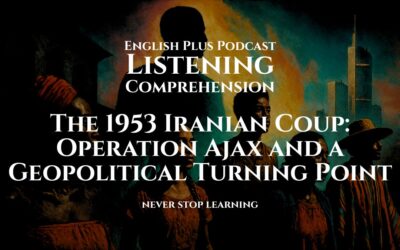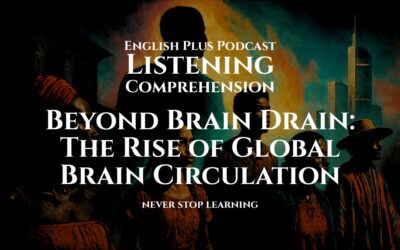Uncover Meaning: Listening and Folklore in Art
Welcome back to our exam listening practice series! In international English tests, you’ll often encounter lectures on arts and culture. These passages require you to listen for themes, examples, and the speaker’s perspective.
To get the most out of this session, try these techniques:
- Listen for Relationships: How do the main ideas connect? Look for words that signal cause and effect (“because,” “as a result”), comparison (“similarly,” “unlike”), and examples (“for instance,” “such as”).
- Identify the Speaker’s Attitude: Is the speaker critical, enthusiastic, neutral, or something else? Tone of voice and word choice (e.g., “fascinating,” “problematic”) are big clues.
- Paraphrase in Your Head: As the speaker makes a point, try to summarize it in your own words mentally. This forces you to process the information actively rather than just letting the sounds wash over you.
- Don’t Fear the Unknown: You might hear the names of artists or concepts you don’t know. That’s okay! The questions will be based on the information given in the lecture, not on your prior knowledge. Focus on what the speaker says about them.
Today’s lecture is about the fascinating ways contemporary artists use folklore. Let’s listen.
Listen
Transcript
Listening Transcript: Please do not read the transcript before you listen and take the listening comprehension quiz.
Good afternoon. Today, we’re going to explore a rich and fascinating intersection: the place where ancient stories meet modern expression. I’m talking about the influence of folklore on contemporary art. When we use the term ‘folklore,’ we’re referring to the expressive body of culture shared by a particular group of people; it encompasses the traditions of that culture, subculture, or group. These are the myths, legends, folk tales, and proverbs that are passed down through generations, often orally. You might think of these as stories of the past, but what I want to demonstrate today is how they are very much alive, serving as a powerful and enduring wellspring of inspiration for artists working right now.
So, why do contemporary artists turn to these old tales? There are several compelling reasons. First, folklore provides a rich vocabulary of symbols and archetypes that are deeply embedded in our collective consciousness. An artist can tap into a myth or a fairy tale and immediately evoke a whole range of associations and emotions in the viewer. Think of the archetype of the ‘trickster’ figure, which appears in the folklore of hundreds of cultures. An artist can use this figure to explore themes of disruption, cleverness, and subverting authority without having to build a new symbolic language from scratch. It’s a form of conceptual shorthand.
Second, in our increasingly globalized and digitized world, folklore offers a powerful connection to cultural heritage and identity. Artists often use folk narratives to investigate their own roots, to reclaim stories that may have been marginalized, or to critique colonial histories. For instance, the British-Nigerian artist Yinka Shonibare often uses the visual language of colonial-era Europe but populates it with figures and patterns that allude to African identity. While not directly retelling a single folk tale, his work is imbued with the spirit of folklore as a carrier of cultural memory and a tool for questioning dominant historical narratives. He creates a visual folklore of his own.
Let’s look at a more direct example. The American artist Kiki Smith has spent much of her career exploring the figures of fairy tales and Christian hagiography. She is fascinated by the representation of the body, particularly the female body, in these stories. In her work, figures like Little Red Riding Hood or the Virgin Mary are not presented as simple, one-dimensional characters. Smith deconstructs them, examining their vulnerability, their power, and their relationship with the natural world. Her sculpture “Rapture,” for example, depicts a woman stepping out from the belly of a wolf. This is a powerful reinterpretation of the Little Red Riding Hood story, transforming a narrative of victimhood into one of rebirth and self-liberation. She isn’t just illustrating the tale; she’s using its framework to pose new questions about femininity and agency.
This act of reinterpretation is key. Contemporary artists are rarely interested in simply illustrating folklore. Instead, they engage in a critical dialogue with it. They might take a familiar story and twist it to expose a hidden anxiety or a contemporary social issue. The Canadian artist collective, General Idea, for example, created installations in the 1980s that played on the idea of a crest or a coat of arms, a traditional form, but they used it to address the AIDS crisis, creating a new, urgent kind of emblem. This is a more abstract use of folkloric structure, but it follows the same principle: using a traditional form to speak to a contemporary reality.
Furthermore, the influence isn’t just in the subject matter; it can be in the materials and techniques themselves. Artists may embrace traditional craft techniques—like weaving, ceramics, or woodcarving—that have long been associated with folk art. By bringing these ‘low art’ forms into the ‘high art’ context of a gallery, they challenge the very definition of what art is. They question the hierarchy that has historically placed painting and sculpture above so-called ‘craft.’ This is another way of honoring a heritage that exists outside the official, academic art world.
However, this engagement with folklore is not without its complexities. One potential pitfall is the risk of exoticism or cultural appropriation. An artist from a dominant culture who borrows from the folklore of a marginalized community must tread very carefully. Is their work a genuine homage, or is it a superficial lifting of motifs that strips them of their original context and meaning? This is a vibrant and ongoing debate in the art world. The line between appreciation and appropriation can be very thin, and it requires a deep, respectful engagement with the source material.
In conclusion, folklore is far more than a collection of dusty, antiquated stories. It is a living, breathing source of inspiration that provides contemporary artists with a powerful toolkit. It offers a bridge to the past, a language of shared symbols, and a framework for critically engaging with the present. By reinterpreting myths, reclaiming traditions, and challenging artistic hierarchies, these artists ensure that the old tales continue to resonate, finding new meanings and new urgency in the complexities of our modern world. They remind us that the stories we tell ourselves about who we are have always been, and continue to be, at the very heart of artistic creation.
Listening Comprehension Quiz
Key Vocabulary and Phrases
- Folklore:
- What it means: The traditional beliefs, customs, stories, and sayings of a community, passed through generations.
- How it was used: The lecture’s topic is the influence of folklore on art, defining it as the “expressive body of culture shared by a particular group of people.”
- Wellspring of Inspiration:
- What it means: A rich and continuous source of ideas or creativity.
- How it was used: The lecturer described folklore as an “enduring wellspring of inspiration” for contemporary artists, meaning it’s a source they can always draw from.
- Archetype:
- What it means: A very typical example of a certain person or thing; a recurrent symbol or motif in literature, art, or mythology.
- How it was used: The lecture mentioned the ‘trickster’ as an archetype that artists can use to tap into shared cultural understanding.
- Collective Consciousness:
- What it means: The set of shared beliefs, ideas, and moral attitudes which operate as a unifying force within a society.
- How it was used: The lecturer stated that archetypes are “deeply embedded in our collective consciousness,” meaning they are part of a culture’s shared understanding.
- To Reclaim (Stories):
- What it means: To take back something that was lost or taken away; in this context, to bring stories from a marginalized culture back into prominence.
- How it was used: The lecturer explained that artists use folklore to “reclaim stories that may have been marginalized.”
- Subverting Authority:
- What it means: To undermine the power and influence of an established system or institution.
- How it was used: The trickster archetype was given as an example of a figure used to explore themes of “subverting authority.”
- Deconstructs:
- What it means: To analyze a text or idea by taking it apart to reveal its underlying assumptions and structures.
- How it was used: The lecture said that Kiki Smith “deconstructs” fairy tale characters, meaning she breaks them down to analyze their components and hidden meanings.
- Agency:
- What it means: The capacity of an individual to act independently and to make their own free choices.
- How it was used: Kiki Smith’s work was said to pose new questions about “femininity and agency,” exploring the power and autonomy of female characters.
- Cultural Appropriation:
- What it means: The unacknowledged or inappropriate adoption of the customs, practices, or ideas of one people or society by members of another, typically more dominant, people or society.
- How it was used: This was raised as a potential “pitfall” or problem when artists from a dominant culture borrow from the folklore of a marginalized one.
- Antiquated:
- What it means: Old-fashioned or outdated.
- How it was used: In the conclusion, the lecturer stated that folklore is “far more than a collection of dusty, antiquated stories,” emphasizing its modern relevance.










0 Comments